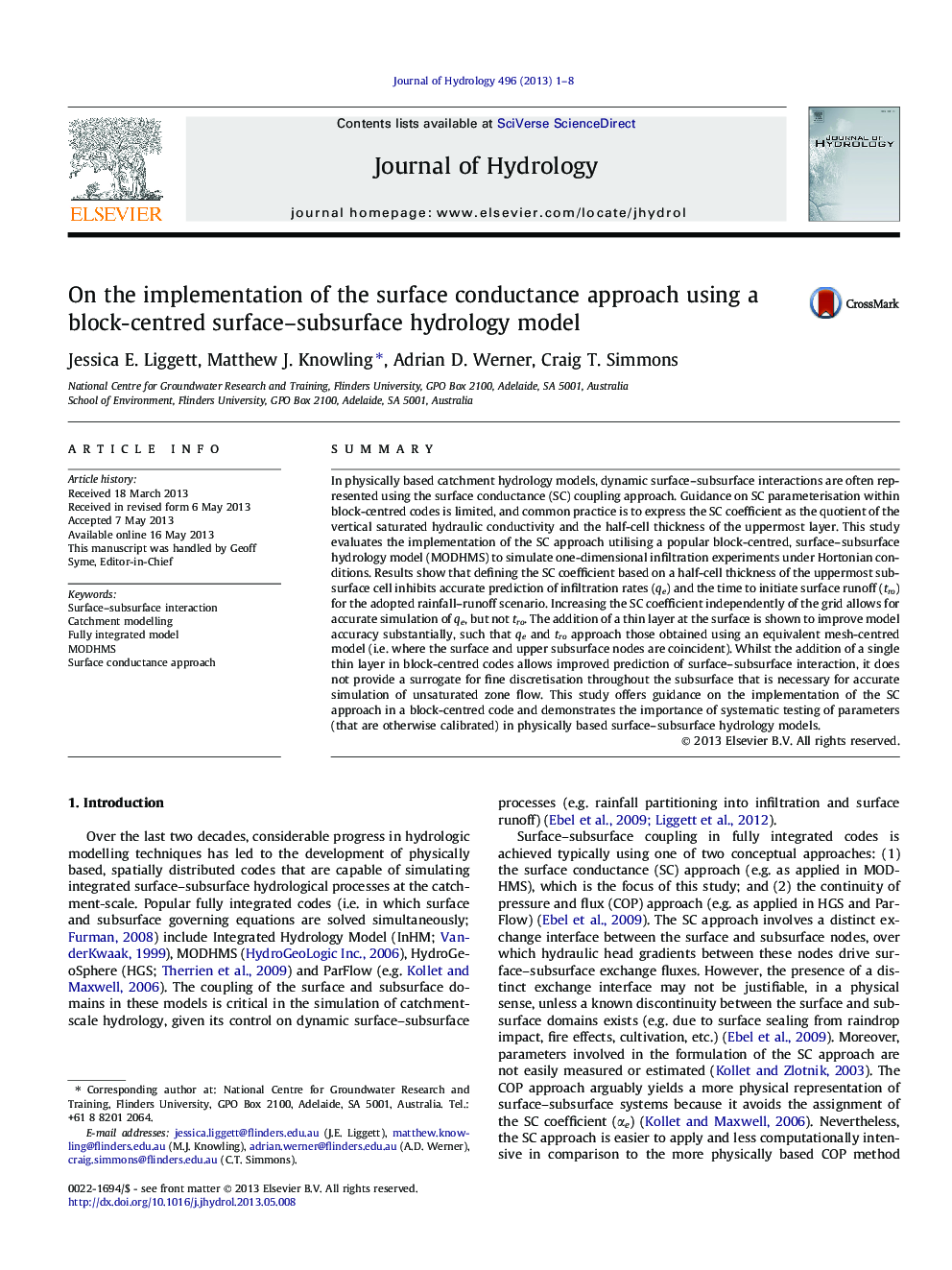| Article ID | Journal | Published Year | Pages | File Type |
|---|---|---|---|---|
| 6413712 | Journal of Hydrology | 2013 | 8 Pages |
â¢The surface conductance (SC) approach is explored for rainfall partitioning in a block-centred code.â¢A discrepancy arises between saturation of the uppermost node and the head reaching the land surface.â¢Previous research suggests the exchange interface be represented by the uppermost half-cell in MODHMS.â¢Our work suggests that the previous recommendation prevents accurate simulation of rainfall partitioning.â¢Adding a thin surface layer improves model accuracy with minimal increase in run time.
SummaryIn physically based catchment hydrology models, dynamic surface-subsurface interactions are often represented using the surface conductance (SC) coupling approach. Guidance on SC parameterisation within block-centred codes is limited, and common practice is to express the SC coefficient as the quotient of the vertical saturated hydraulic conductivity and the half-cell thickness of the uppermost layer. This study evaluates the implementation of the SC approach utilising a popular block-centred, surface-subsurface hydrology model (MODHMS) to simulate one-dimensional infiltration experiments under Hortonian conditions. Results show that defining the SC coefficient based on a half-cell thickness of the uppermost subsurface cell inhibits accurate prediction of infiltration rates (qe) and the time to initiate surface runoff (tro) for the adopted rainfall-runoff scenario. Increasing the SC coefficient independently of the grid allows for accurate simulation of qe, but not tro. The addition of a thin layer at the surface is shown to improve model accuracy substantially, such that qe and tro approach those obtained using an equivalent mesh-centred model (i.e. where the surface and upper subsurface nodes are coincident). Whilst the addition of a single thin layer in block-centred codes allows improved prediction of surface-subsurface interaction, it does not provide a surrogate for fine discretisation throughout the subsurface that is necessary for accurate simulation of unsaturated zone flow. This study offers guidance on the implementation of the SC approach in a block-centred code and demonstrates the importance of systematic testing of parameters (that are otherwise calibrated) in physically based surface-subsurface hydrology models.
